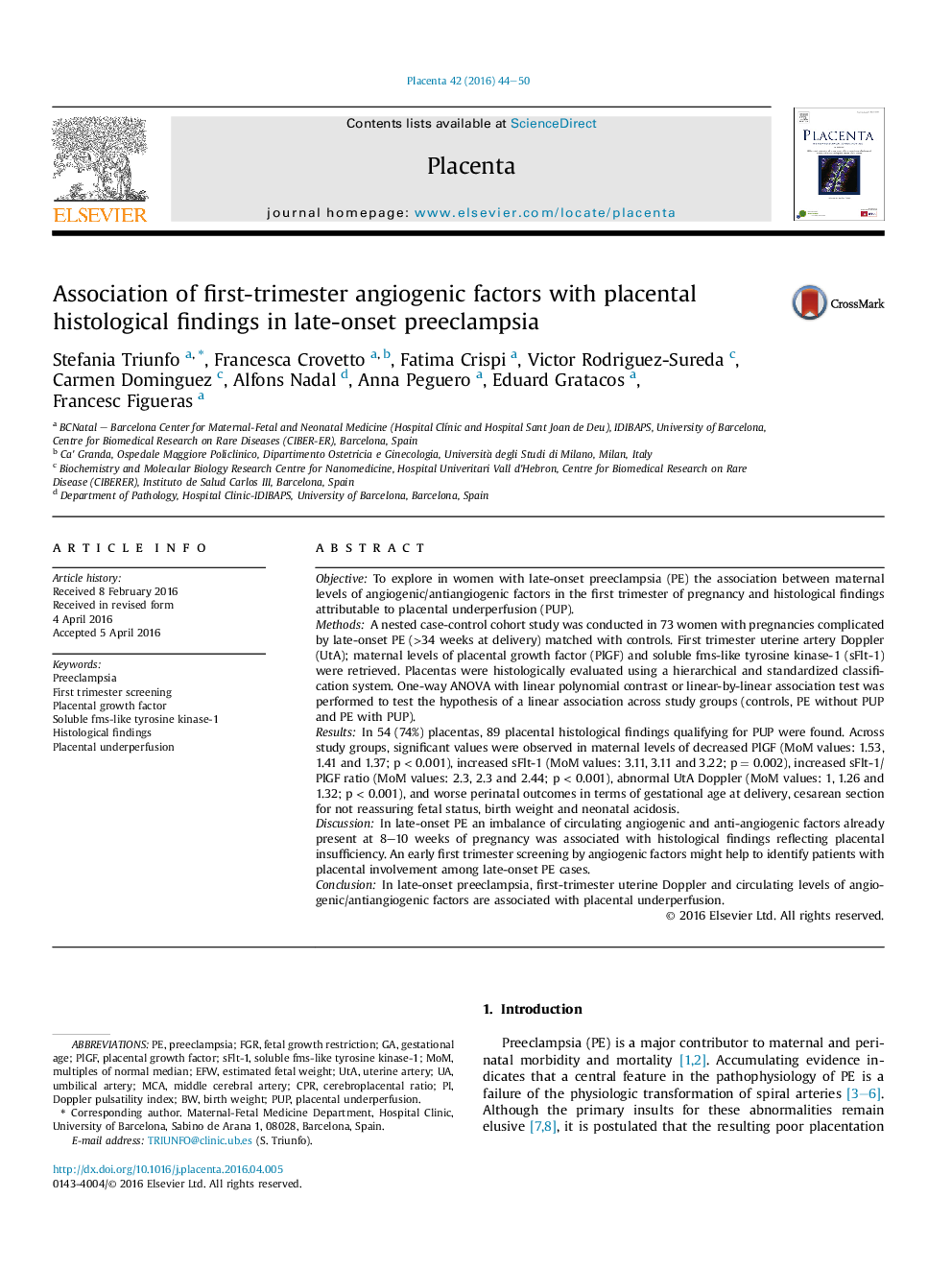| کد مقاله | کد نشریه | سال انتشار | مقاله انگلیسی | نسخه تمام متن |
|---|---|---|---|---|
| 5894331 | 1568566 | 2016 | 7 صفحه PDF | دانلود رایگان |
- Late-onset preeclampsia is associated with adverse perinatal outcomes.
- First study to investigate the relationship between first trimester PlGF-sFlt-1 and placental histology.
- First trimester PlGF and sFlt-1 levels are associated with histological placental insufficiency.
ObjectiveTo explore in women with late-onset preeclampsia (PE) the association between maternal levels of angiogenic/antiangiogenic factors in the first trimester of pregnancy and histological findings attributable to placental underperfusion (PUP).MethodsA nested case-control cohort study was conducted in 73 women with pregnancies complicated by late-onset PE (>34 weeks at delivery) matched with controls. First trimester uterine artery Doppler (UtA); maternal levels of placental growth factor (PlGF) and soluble fms-like tyrosine kinase-1 (sFlt-1) were retrieved. Placentas were histologically evaluated using a hierarchical and standardized classification system. One-way ANOVA with linear polynomial contrast or linear-by-linear association test was performed to test the hypothesis of a linear association across study groups (controls, PE without PUP and PE with PUP).ResultsIn 54 (74%) placentas, 89 placental histological findings qualifying for PUP were found. Across study groups, significant values were observed in maternal levels of decreased PlGF (MoM values: 1.53, 1.41 and 1.37; p < 0.001), increased sFlt-1 (MoM values: 3.11, 3.11 and 3.22; p = 0.002), increased sFlt-1/PlGF ratio (MoM values: 2.3, 2.3 and 2.44; p < 0.001), abnormal UtA Doppler (MoM values: 1, 1.26 and 1.32; p < 0.001), and worse perinatal outcomes in terms of gestational age at delivery, cesarean section for not reassuring fetal status, birth weight and neonatal acidosis.DiscussionIn late-onset PE an imbalance of circulating angiogenic and anti-angiogenic factors already present at 8-10 weeks of pregnancy was associated with histological findings reflecting placental insufficiency. An early first trimester screening by angiogenic factors might help to identify patients with placental involvement among late-onset PE cases.ConclusionIn late-onset preeclampsia, first-trimester uterine Doppler and circulating levels of angiogenic/antiangiogenic factors are associated with placental underperfusion.
Journal: Placenta - Volume 42, June 2016, Pages 44-50
